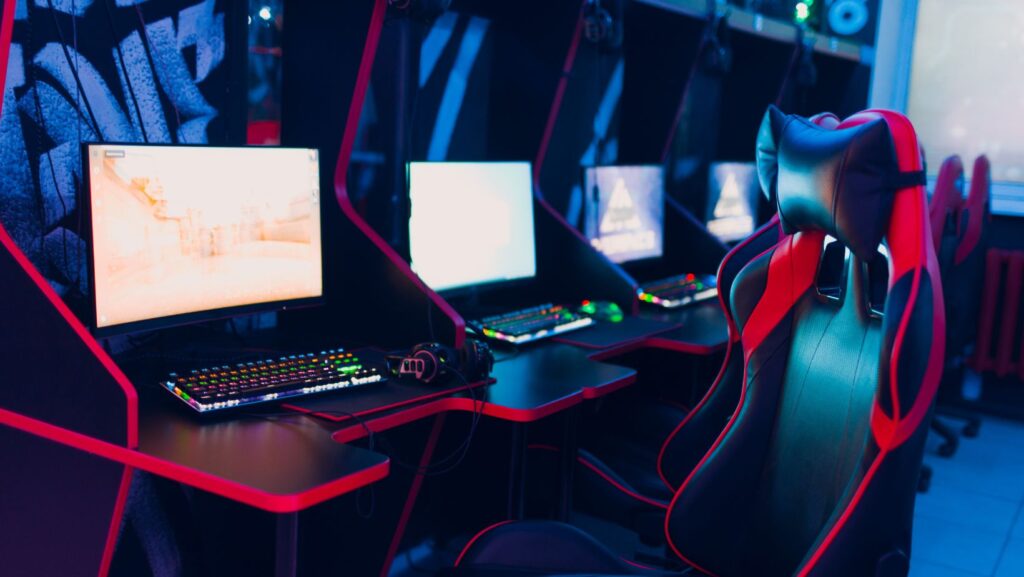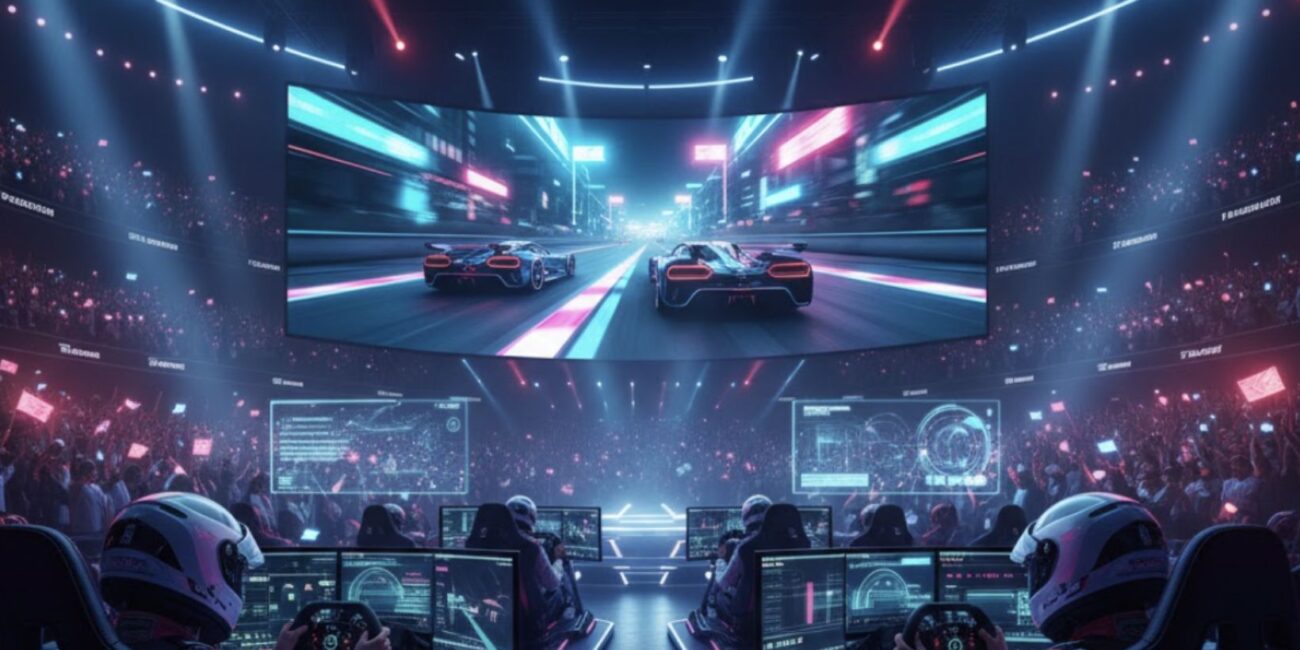In the last decade, motorsport has undergone one of the most fascinating evolutions in its history. What began as roaring engines and rubber on asphalt has extended into a new digital frontier – E-Motorsport. From professional Formula 1 drivers to casual gamers, millions of people now take part in high-intensity, hyper-realistic racing competitions online.
But it’s not just the racing that’s changing, it’s how fans interact with it. As spectators become participants, and as streams replace grandstands, online betting has found a new arena in the world of E-Motorsport. The combination of real-time data, competitive spirit, and accessible online platforms has made it easier than ever for fans to be part of the action.
Some online betting platforms, such as those accessible through the pari match link, have begun including E-Motorsport among their event categories, reflecting the sport’s expanding global presence.
What Is E-Motorsport and Why It’s Growing Fast
E-Motorsport (also called sim racing or virtual motorsport) is competitive racing using highly realistic driving simulators that mimic the physics, handling, and tracks of real-world motorsport. Platforms like iRacing, Assetto Corsa, and Gran Turismo have developed simulation engines so advanced that professional drivers use them for training between real races.
The rise of E-Motorsport is driven by accessibility and technology. You don’t need millions of dollars or a sponsor to race at Monza or Silverstone anymore. You just need a simulator rig, an internet connection, and skill. The COVID-19 pandemic also played a key role in accelerating its popularity: when real races paused, e-racing kept fans and drivers connected to the sport.
Today, tournaments such as the F1 Esports Series, Le Mans Virtual, and Gran Turismo World Series draw massive audiences, sponsorships, and even official recognition from traditional motorsport organizations.
How E-Motorsport Blurs the Line Between Gaming and Real Racing
The realism of E-Motorsport has reached a point where the boundary between virtual and real racing is almost invisible. Drivers in both worlds use similar strategies: tire management, fuel consumption, overtaking precision, and mental focus.
Many professional racers have joined virtual competitions: Lando Norris, Max Verstappen, and Charles Leclerc regularly compete online. Meanwhile, sim racers like Jimmy Broadbent and James Baldwin have transitioned from virtual platforms to real racing seats, proving that the skills are transferable.
This blend of gaming and motorsport creates a new type of athlete: one who’s part driver, part gamer, and fully competitive. For fans, it’s thrilling: you can watch elite-level races live on Twitch or YouTube, interact with drivers, and even join open events yourself.
The Emergence of Online Betting in the Digital Racing World
With the professionalization of E-Motorsport came new layers of fan engagement including online betting. As official leagues, regulated tournaments, and global audiences emerged, betting platforms began offering markets for virtual races, just like traditional motorsport.
Online betting in E-Motorsport follows similar formats: predicting the race winner, podium finishes, fastest laps, qualifying results, or even head-to-head matchups between drivers. Live betting — placing wagers during the race — adds excitement, especially when races are streamed in real time with instant updates.
What makes E-Motorsport betting unique is transparency and data. Unlike physical races affected by unpredictable factors like weather or mechanical issues, virtual competitions are often more data-driven and consistent, allowing bettors to use analytics for smarter decisions.
However, as with any form of wagering, responsible gaming is key. The best platforms encourage moderation, offer self-limits, and focus on entertainment value rather than profit.
Understanding Odds and Factors That Influence E-Motorsport Betting
E-Motorsport may look like a simple simulation, but the depth of its physics and strategy makes it a complex betting field. Odds are influenced by multiple factors, including:
- Track familiarity: Some drivers specialize in particular circuits.
- Simulator type: Each platform (like iRacing vs. Assetto Corsa) has unique physics models.
- Driver skill and experience: Sim racers often have years of data available to analyze.
- Team setup and hardware: Wheel calibration, screen setup, and even internet latency can make a difference.
Smart bettors consider these factors before making predictions. In many ways, success in E-Motorsport betting mirrors what makes a great driver: precision, patience, and data-driven decision-making.
Comparing Traditional Motorsport Betting and E-Motorsport Wagers
At first glance, betting on real races and virtual ones may seem similar, but key differences set them apart. Traditional motorsport involves physical risks, unpredictable weather, and mechanical reliability, all of which create volatility. E-Motorsport, on the other hand, offers a more controlled environment.
For bettors, this means:
- More frequent events: E-racing tournaments happen year-round.
- Live, interactive experiences: Real-time streams allow instant updates and chat engagement.
- Lower randomness: Simulated physics reduce external disruptions.
The downside? E-Motorsport is still relatively young. There’s less historical data, and public familiarity with drivers is still growing. Yet, this also creates opportunities especially for fans who understand the nuances of simulation racing.
The Role of Technology and Streaming Platforms
Streaming technology is the heartbeat of E-Motorsport. Platforms like Twitch, YouTube, and Kick have transformed how audiences consume races. Instead of watching from a distance, fans now engage through chatrooms, live analytics, and even direct interactions with racers.
Some betting platforms integrate these streams directly into their interfaces, allowing users to follow races and odds simultaneously. The merging of real-time data and live broadcasting creates a dynamic, immersive experience. It is something traditional motorsport coverage rarely offered.
As technology evolves, we’re also seeing innovations like AI-based odds calculation, VR race spectating, and interactive telemetry dashboards that allow fans to follow every corner and sector split.
Responsible Betting and the Future of E-Motorsport
The growth of E-Motorsport and online betting opens incredible possibilities but also responsibilities. Fans should approach wagering as a form of entertainment, not income. Platforms and regulators are increasingly focused on transparency, age verification, and promoting safe gaming habits.

Looking ahead, the future of E-Motorsport is bright. We’ll likely see deeper integration between real and virtual racing. For example, hybrid events where real drivers compete alongside sim racers on mirrored tracks. Artificial intelligence could soon power adaptive racing environments and predictive odds systems.
For fans, it means even more immersion, insight, and interactivity — all while enjoying the core of what racing has always been about: competition, precision, and passion.
Conclusion: The Road Ahead for Racing Fans
E-Motorsport isn’t just a digital trend. It’s the next chapter in racing history. It blends the excitement of motorsport with the accessibility of gaming and the engagement of online platforms. Betting adds another layer of strategy, allowing fans to participate more actively in the outcomes they care about.
Whether you’re a lifelong motorsport enthusiast or new to the world of racing, E-Motorsport offers endless opportunities to learn, compete, and connect. The engines may be virtual, but the adrenaline is very real.



